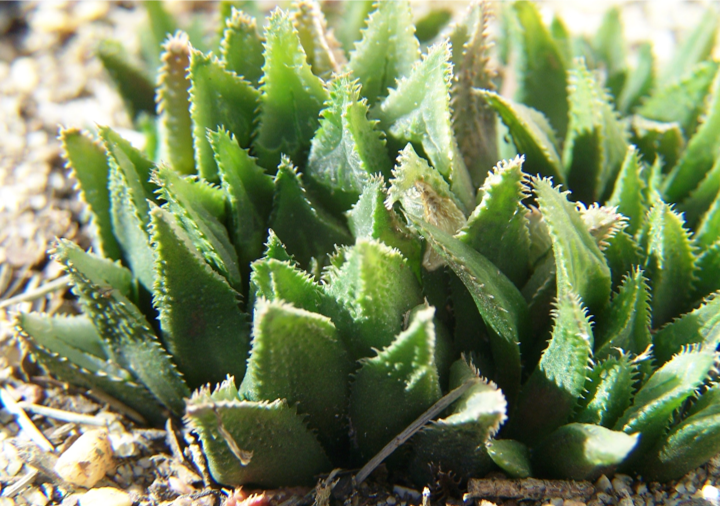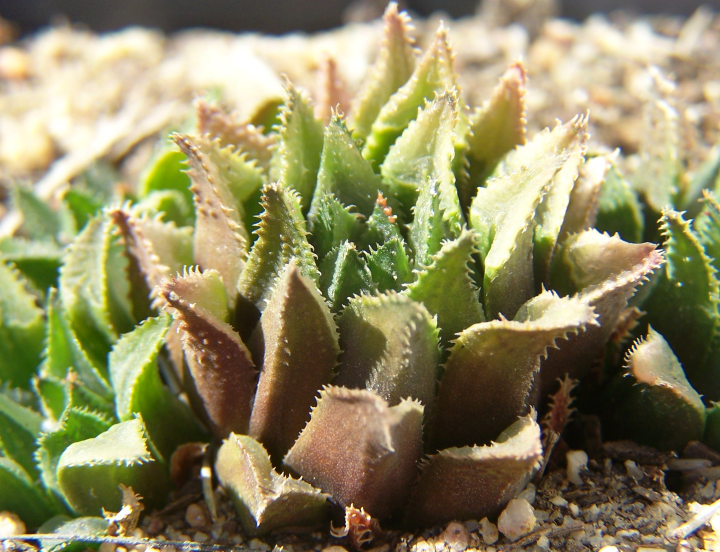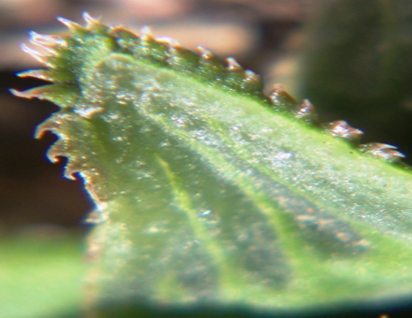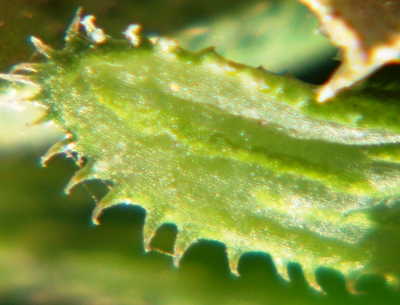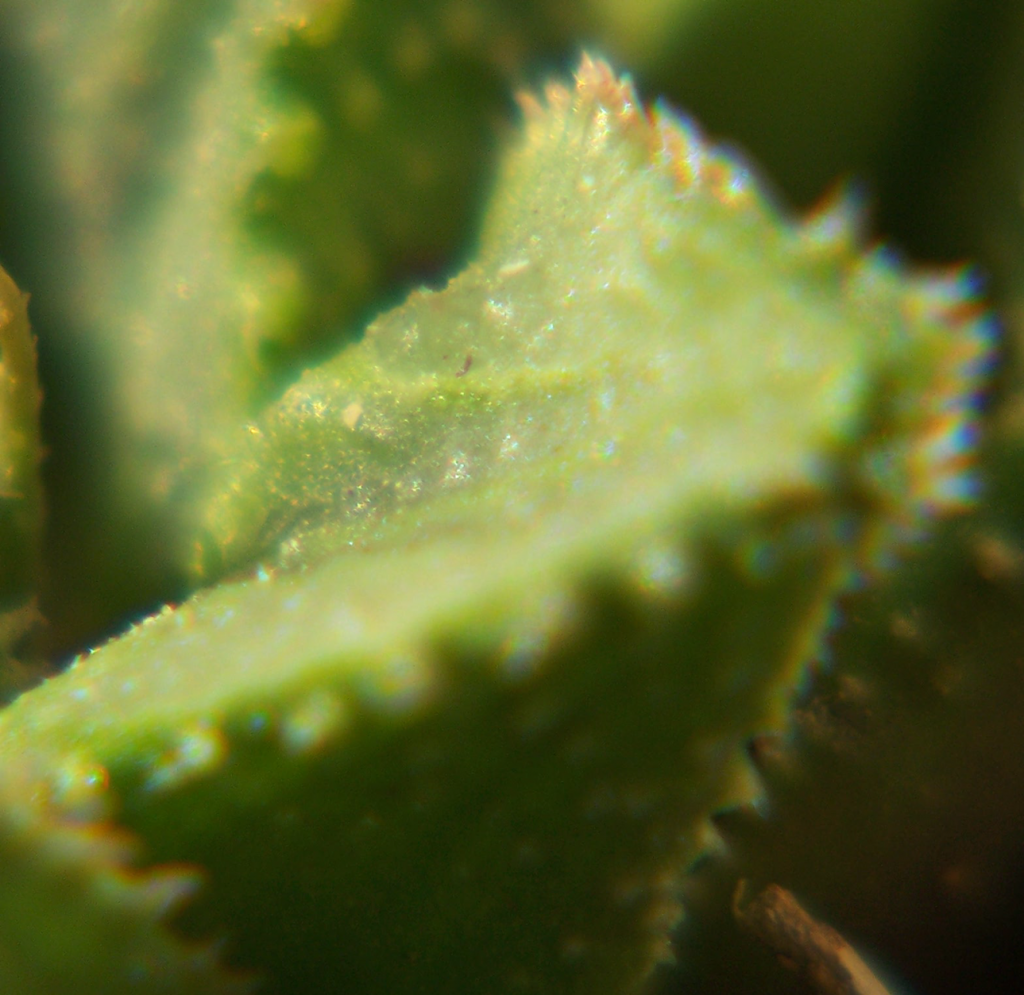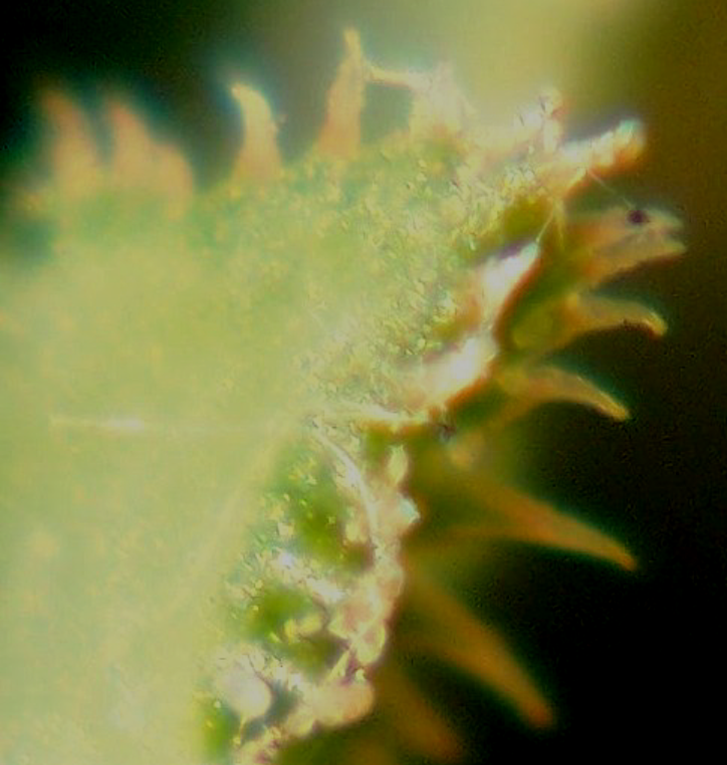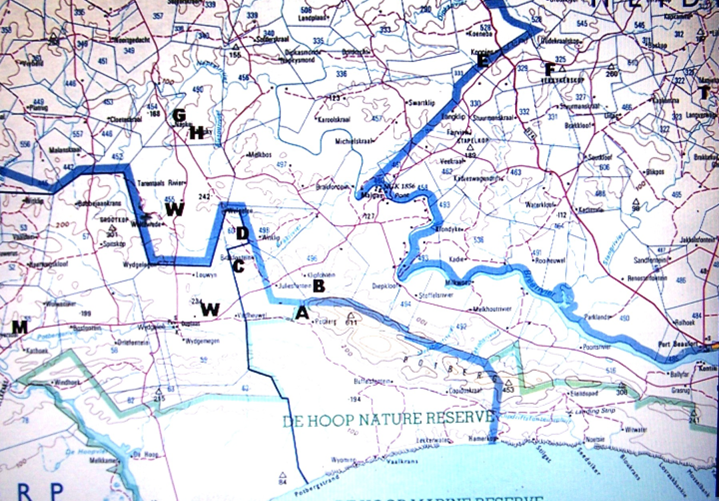In an earlier article I described how Haworthia floribunda (at B on map) transmutes eastwards to H. variegata (at A on map) between the localities Klipfontein and Kleinberg, which are north of the Potberg Mountain. This is despite the fact that they both occur in close proximity at the northwestern end of the mountain. Difficulties now arise in the immediate vicinity to the west (at point W) and this extends northwestwards (to points C and D on the map). While we can confidently ascribe names to floribunda and variegata at those particular sites, the plants to the west and northwest are confounding. They fall into a no-man’s-land of these two species with H. mirabilis, H. maraisii, H. heidelbergensis and even H. mutica thrown in.
Localities and their names can also be confusing, so they are listed as follows:
A – the north and western point of the Potberg mountain on the De Hoop Nature Reserve and adjoining both Klipfontein and Juliesfontein farms (Juliesfontein farm has been renamed Poteberg Farm)
B – Byeneskop, a small hill on the western boundary of the farm Klipfontein
C – the farm Brakfontein
D – a hilltop north of Brakfontein named Witklip Kop
W – the two farms at Die Kop, Wydgelee, at the entrance to the De Hoop reserve
Figs 1 to 4 are from immediately west of A and show characteristics of floribunda in respect of the leaf tips. Figs 5 & 6 are of plants also from close by and the influence of H. maraisii is more evident. Generally the leaves are much shorter and stouter than one would expect in H. floribunda and the small size and numerous leaves suggest H. heidelbergensis. Both pointed leaves and leaves with the flattened and rounded tips may occur on the same plant (see figs 7 & 8).

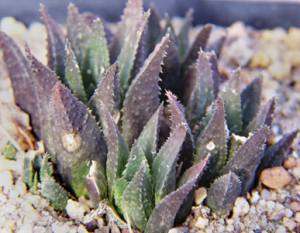
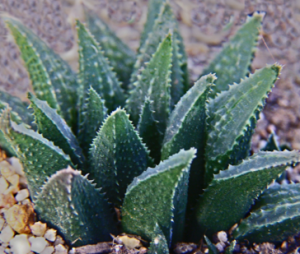
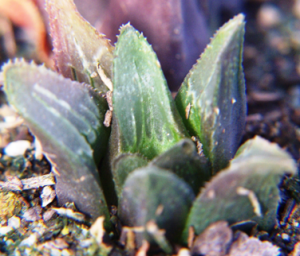
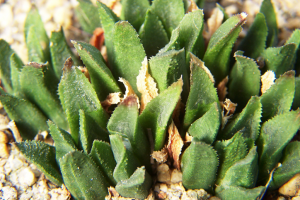
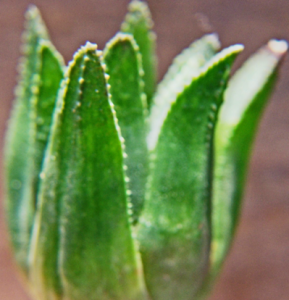
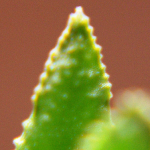
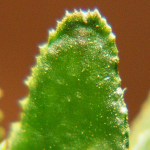
Figs 9 to 13 are of two collections on the same ridge to the south of the Brakfontein homestead and are generally similar to the plants in figs. 1 to 8.
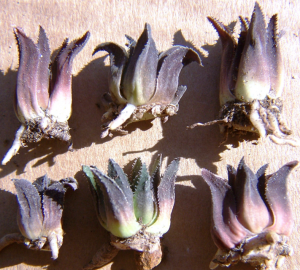
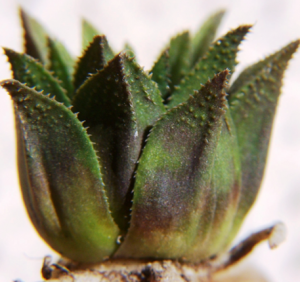
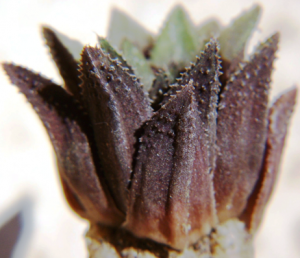
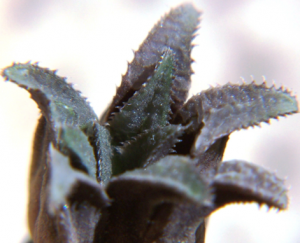

Figs 14 to 22 are plants from a small hill to the north of Brakfontein. There were few plants there as the hill is severely grazed by sheep. There is quite a strong resemblance to H. mirabilis in that the leaves are firmly sub-erect and slightly more robust. The hill is very typical of the ferricrete/silcrete/gravel inselbergs which occur throughout the southern Cape. They are characterized as hard, conglomerated, solid rock that caps the hills, and these are underlain by Bokkeveld shale that has decomposed to kaolin. Exposed Bokkeveld shale is the dominant parent material for the soils of the area and these are arable, whereas the rocky inselbergs are not. The consequence is that habitats suitable for Haworthia are the relatively un-weathered skeletal soils which can only support sparse vegetation. Thus distribution of the plants is island-like and no doubt this plays a significant role in the way the plants relate to each other. ♦

